Henderson, NV Pollen and Allergy Report for Summer 2023
Pollen Allergy Trends in Henderson, NV
When is pollen lowest in Henderson, NV?

February
Lowest month total PPM
Avg. PPM
When is pollen highest in Henderson, NV?

April
Highest month total PPM
Avg. PPM
How does pollen in Henderson, NV compare to Nevada?
Henderson has a higher average PPM than the state of Nevada.
Henderson yearly avg PPM:
Nevada yearly avg PPM:
How does pollen in Henderson, NV compare to the USA?
Henderson has a lower average PPM than the USA.
Henderson yearly avg PPM:
USA yearly avg PPM:
Is pollen worse this year in Henderson, NV?
Spring 2023 was worse than spring 2022.
Spring 2023 PPM:
Spring 2022 PPM:
Average PPM in Henderson, NV
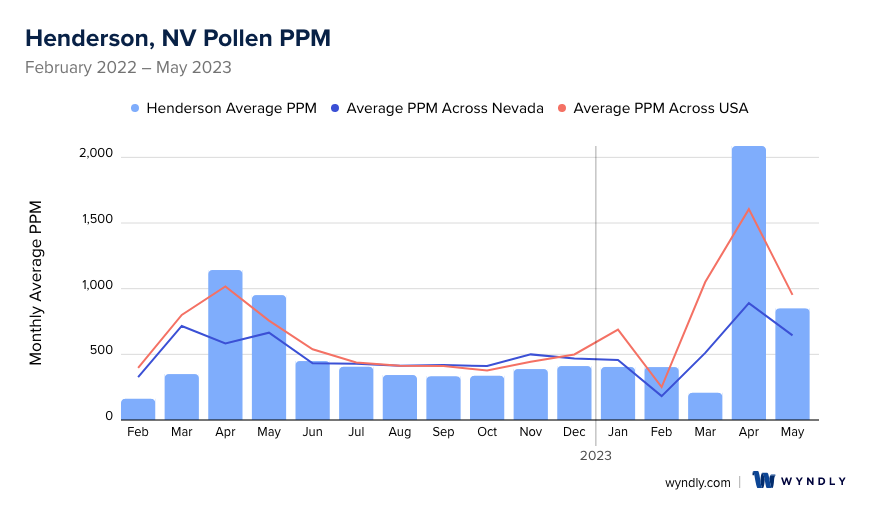
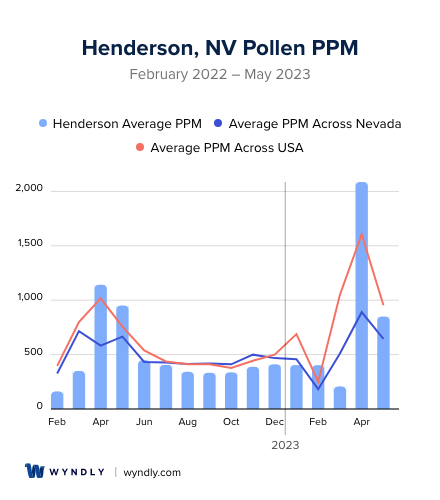
Henderson, NV Pollen and Allergy Breakdown by Month
Grass
When is grass pollen highest in Henderson, NV?
April has the highest grass pollen in Henderson, NV with an average PPM of
When is grass pollen lowest in Henderson, NV?
October has the lowest grass pollen in Henderson, NV with an average PPM of
Tree
When is tree pollen highest in Henderson, NV?
April has the highest tree pollen in Henderson, NV with an average PPM of
When is tree pollen lowest in Henderson, NV?
July has the lowest tree pollen in Henderson, NV with an average PPM of
Weed
When is weed pollen highest in Henderson, NV?
April has the highest weed pollen in Henderson, NV with an average PPM of
When is weed pollen lowest in Henderson, NV?
February has the lowest weed pollen in Henderson, NV with an average PPM of
Henderson, NV Pollen Monthly Breakdown by Pollen Type
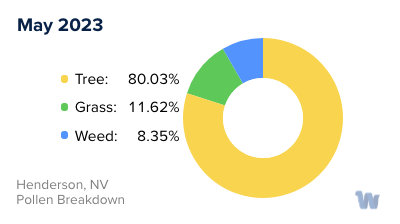
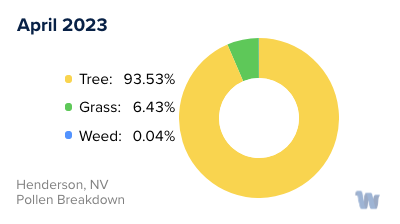
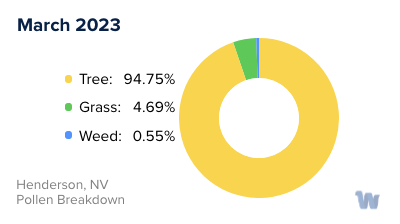
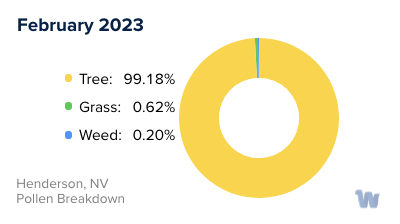
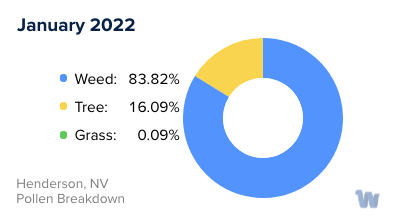
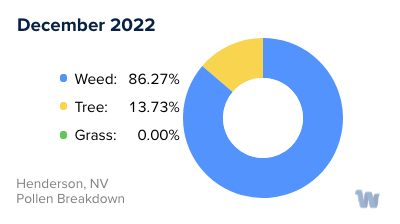
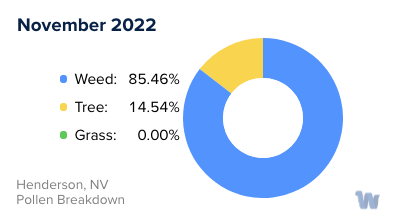
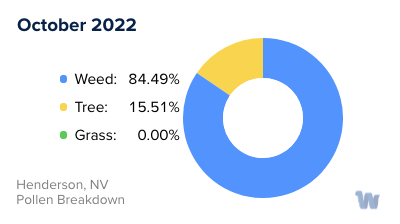
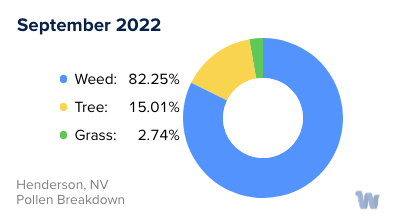
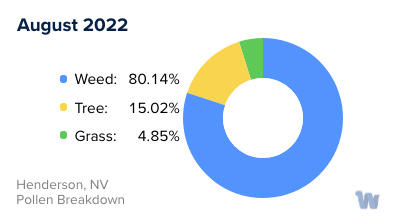
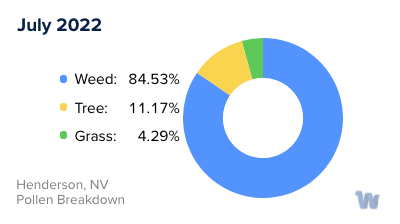
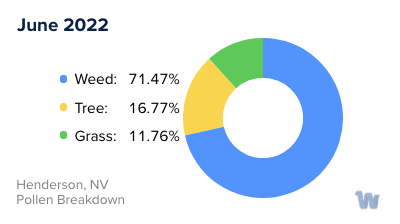
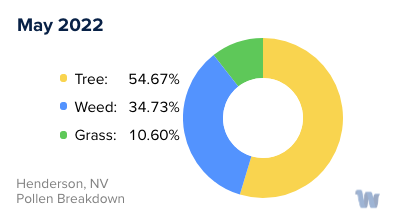
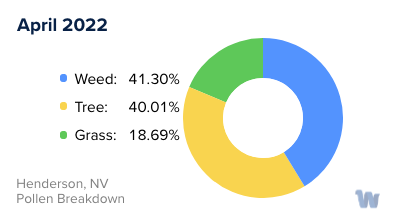
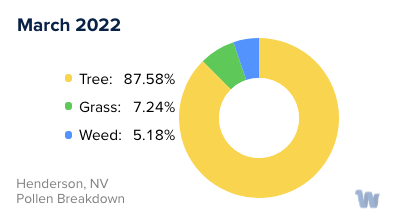
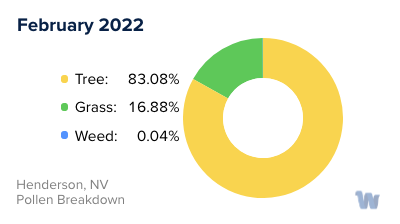
Pollen and Hay Fever in Henderson, NV
Living in the sunny city of Henderson, Nevada, it's important to understand the ins and outs of pollen allergies, also known as hay fever. This city, like many others, experiences a variety of pollen types throughout the year, each one having the potential to trigger allergic reactions in susceptible individuals.
The types of pollen that residents typically encounter come from various sources. Tree pollen, grass pollen, and ragweed pollen are the most common culprits. Tree pollen tends to be low, while grass pollen often registers as high. Ragweed pollen, on the other hand, can fluctuate but is often moderate in presence.
The presence of these pollens varies with the seasons. Unlike in many other states, allergy season in Nevada takes a break during the summer and winter, but it can be quite severe in the spring and fall. Spring allergies in Henderson are primarily due to tree pollen. As spring transitions into summer, you may notice a short-lived but noticeable grass pollen season. As autumn approaches, the pollen from weeds, such as ragweed, begins to take center stage.
The Nevada allergy season generally commences in early spring, around February, and lasts throughout spring before taking a hiatus in July. It then resumes towards the end of August. For those keeping a close watch on pollen counts, the months of March, April, May, and September are typically when seasonal allergies peak. It's during these months that you might want to limit outdoor activities or consider venturing out in the evenings when pollen counts tend to be lower.
While the winter provides a reprieve from outdoor allergens, indoor allergens can still cause issues for many allergy sufferers. It's also worth noting that the most common allergens in Nevada include a variety of grasses, such as Ryegrass, Bluegrass, Bermuda grass, Redtop grass, and Timothy grass, as well as certain trees like the Mulberry, Aspen, Olive, Cypress, and Willow.
Understanding the types of pollen and their seasons can help Henderson residents better anticipate and navigate the challenges of pollen allergies, making life in this beautiful city a bit more comfortable.

